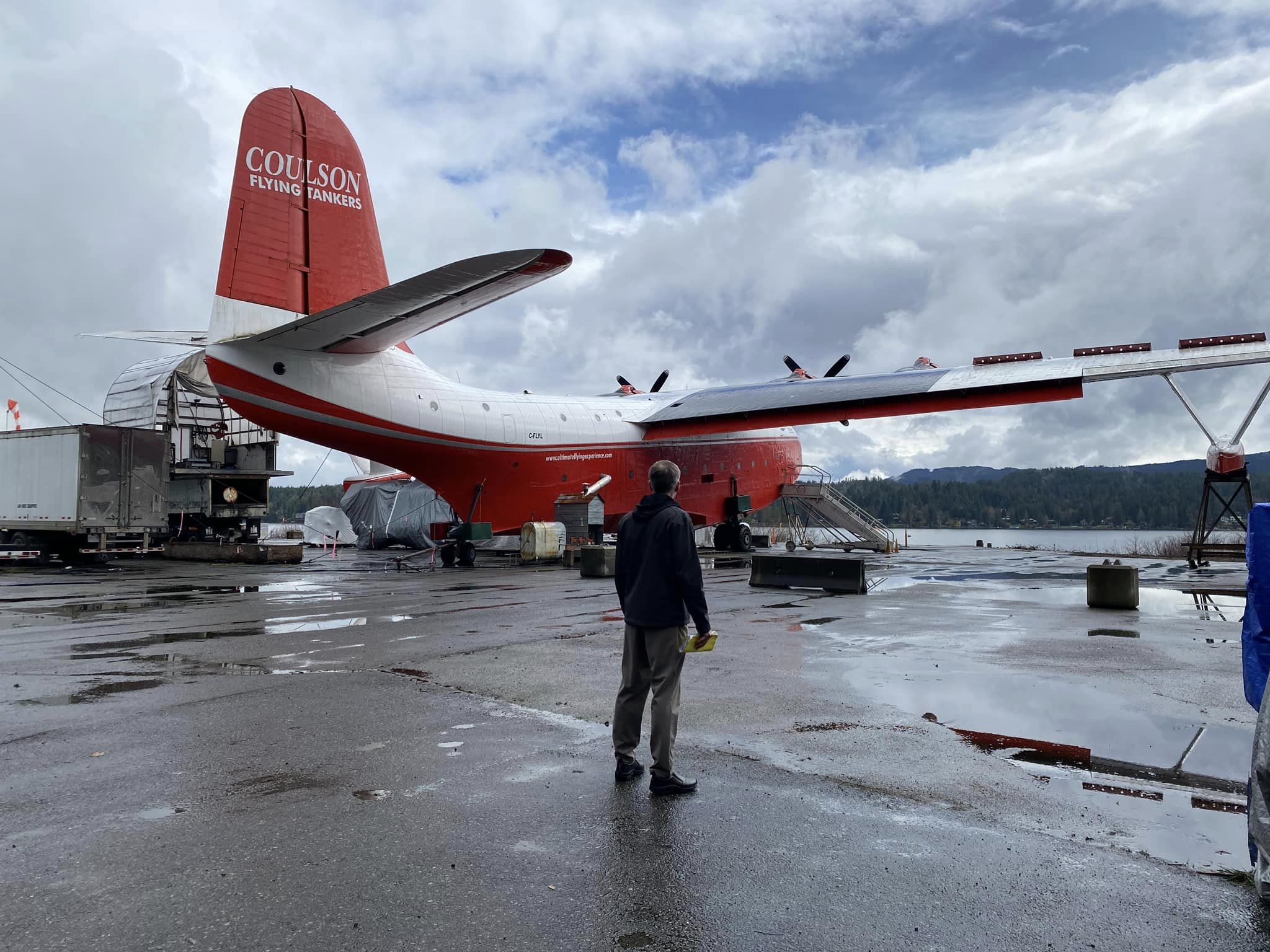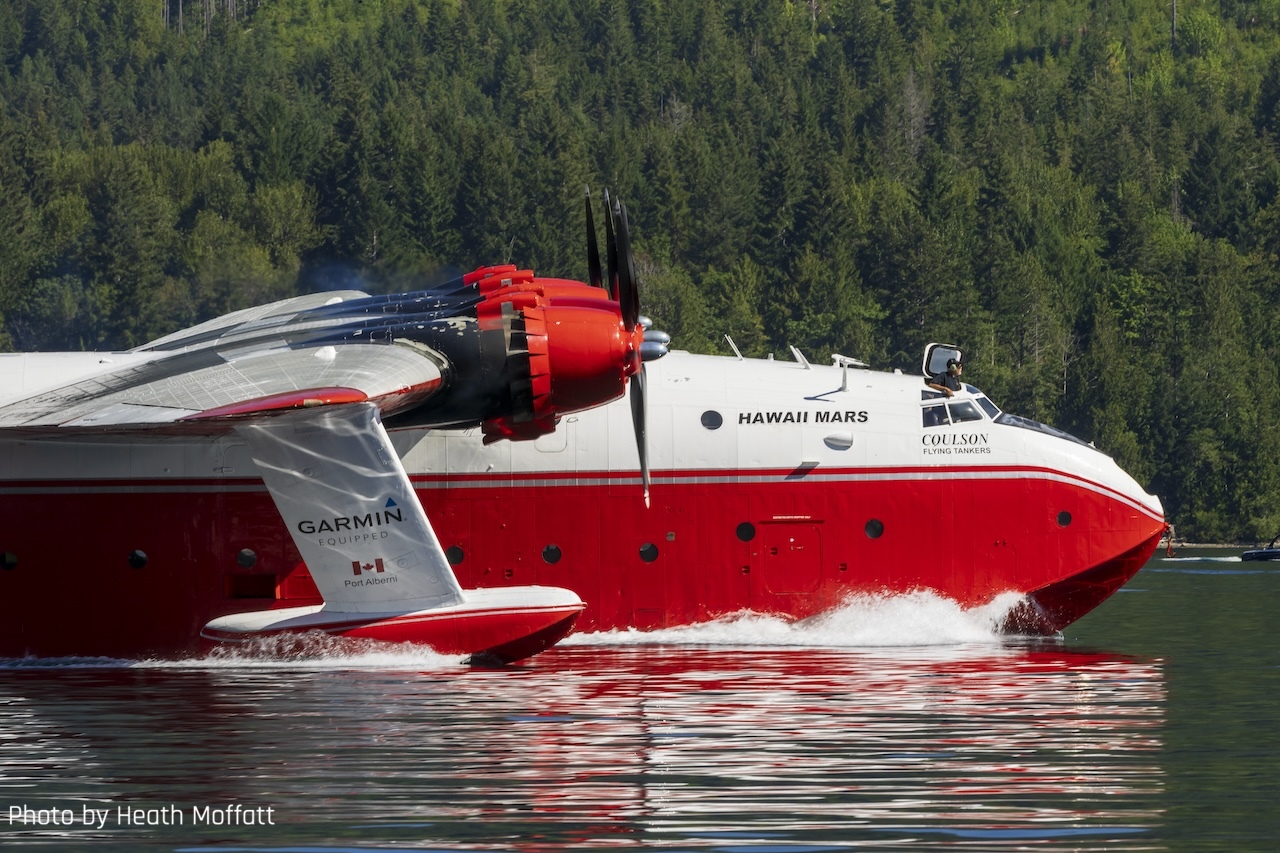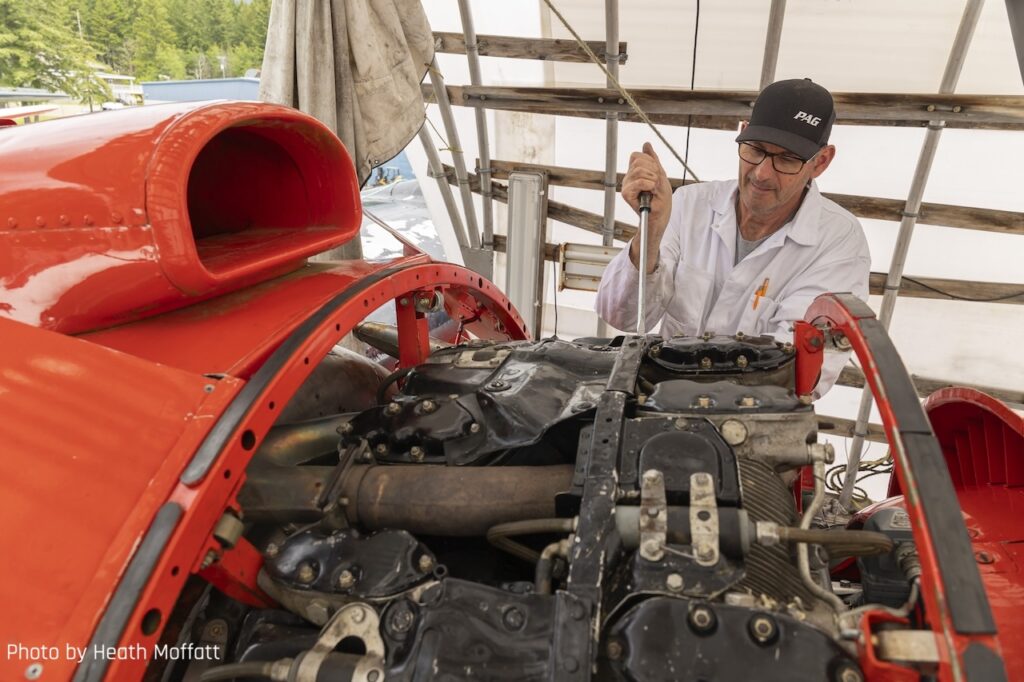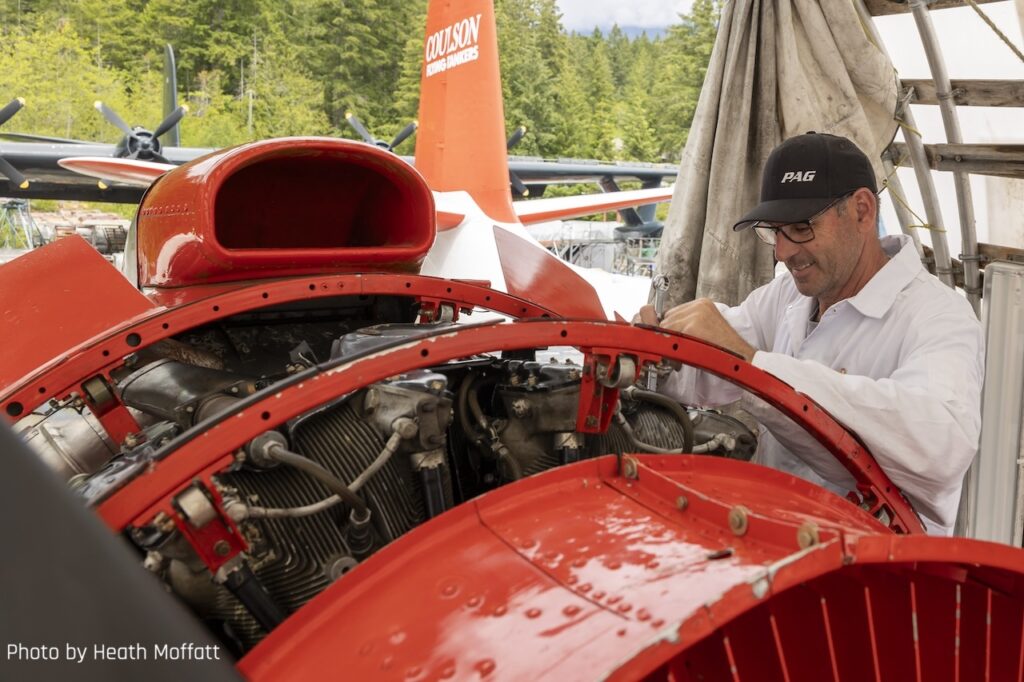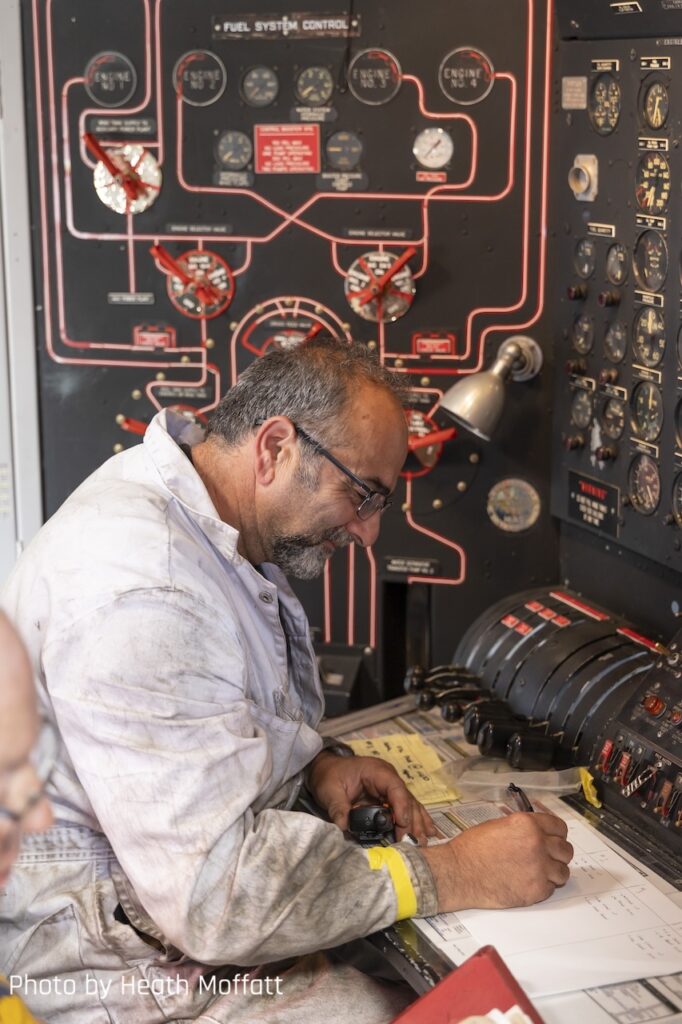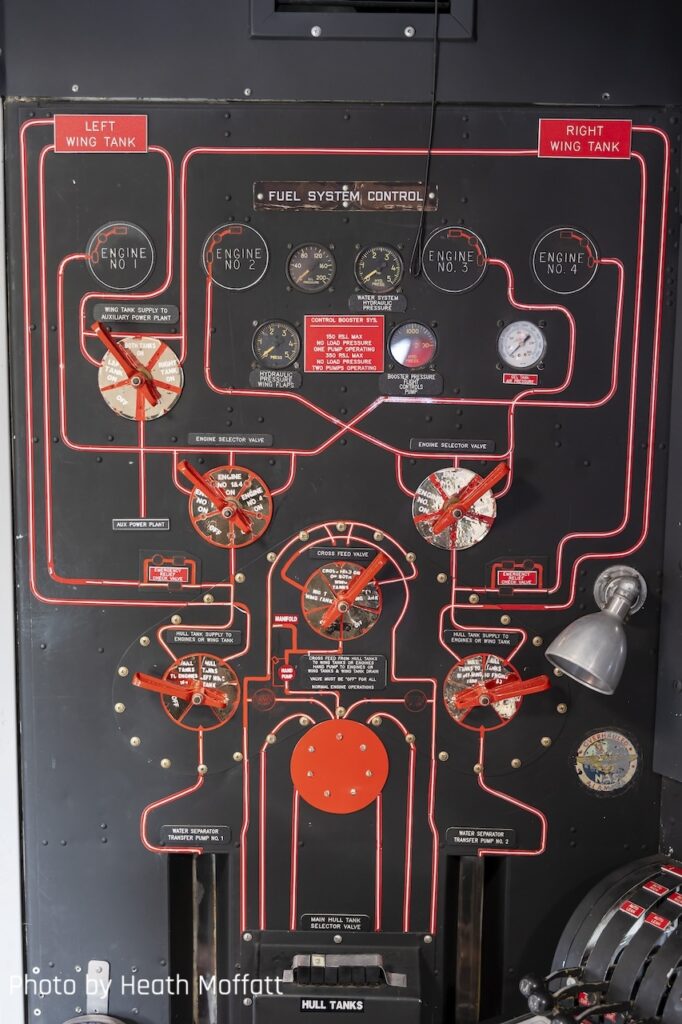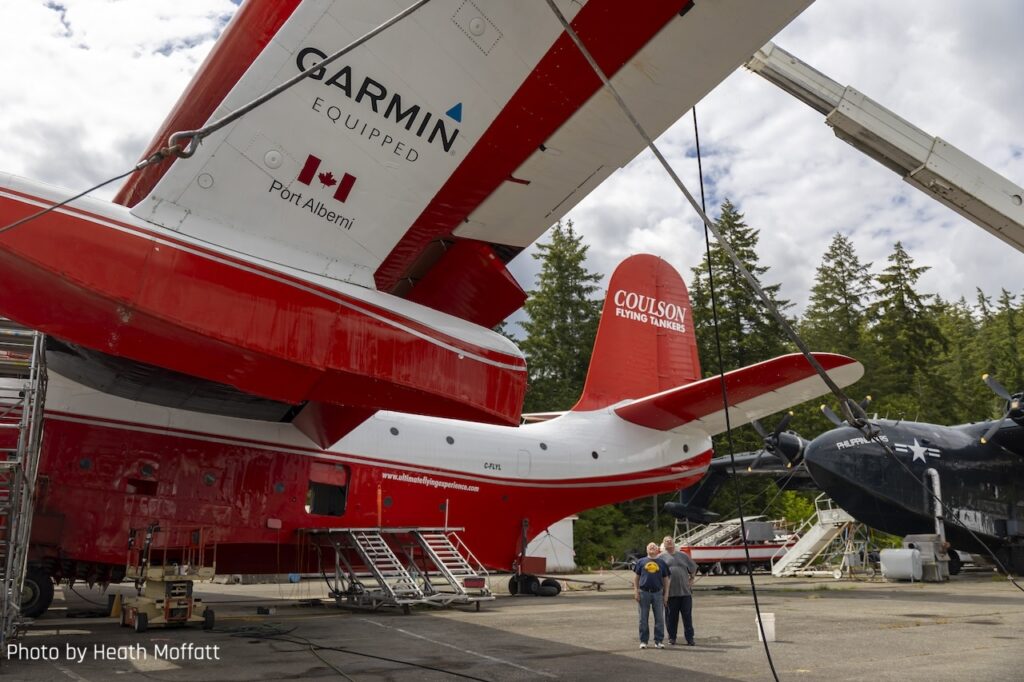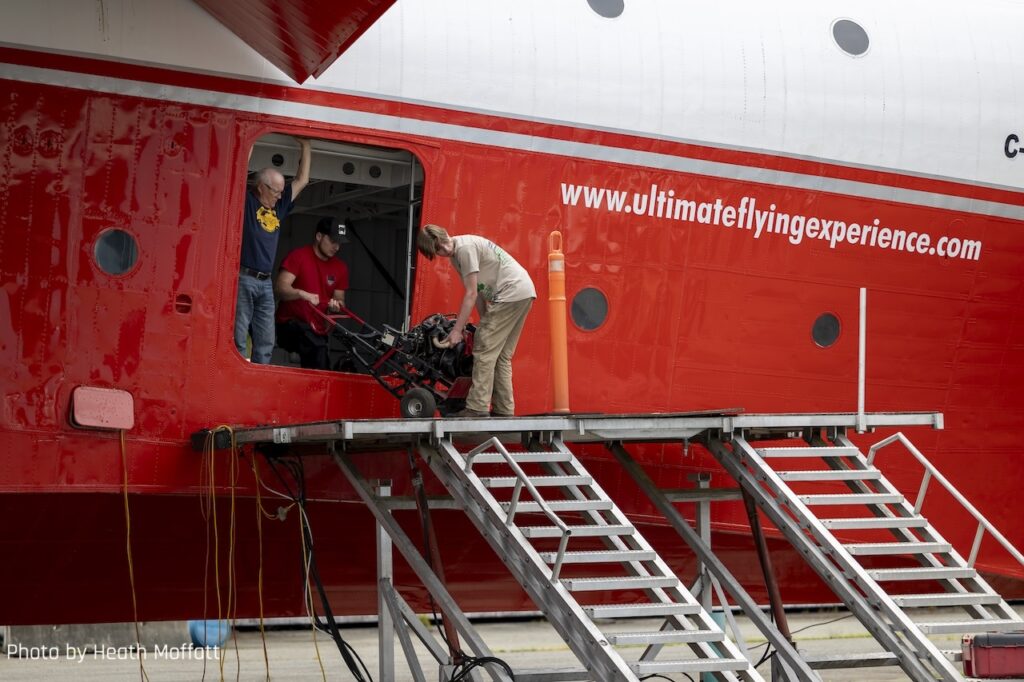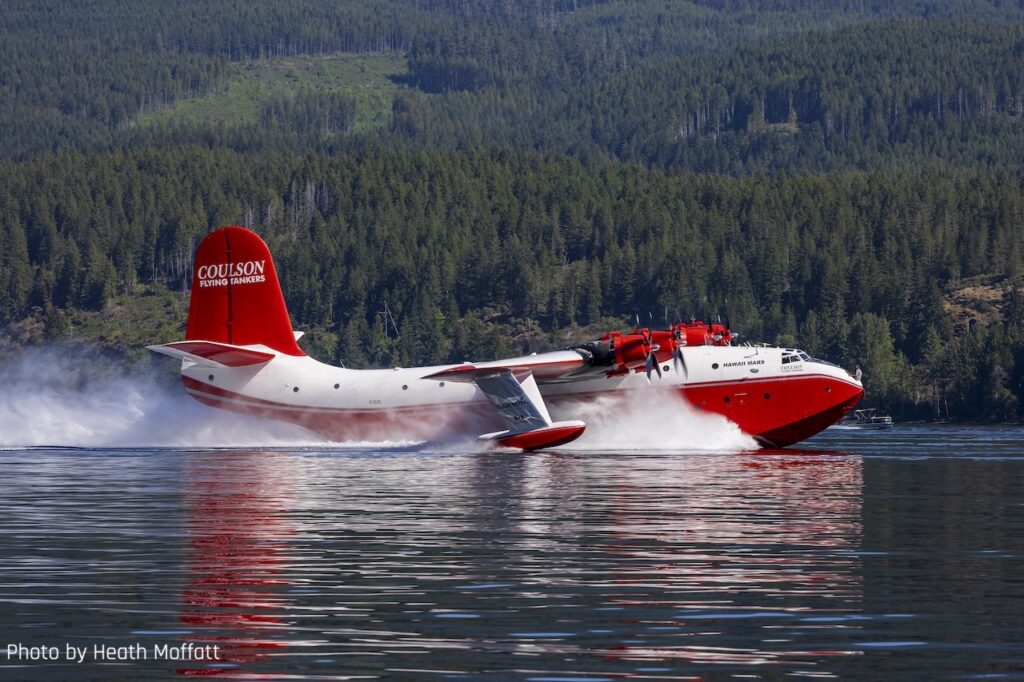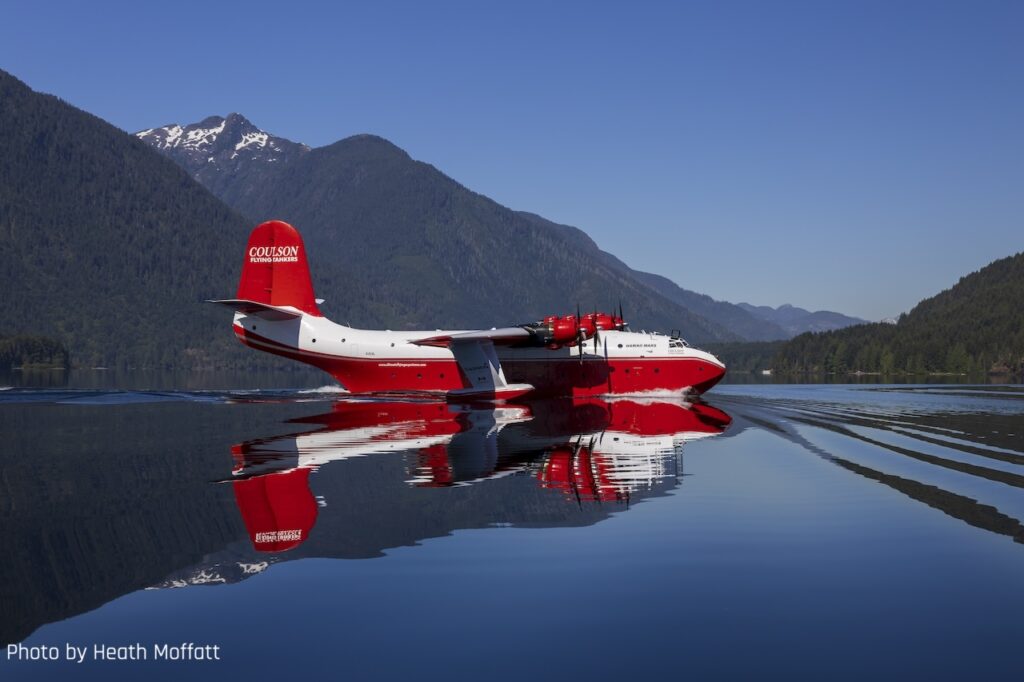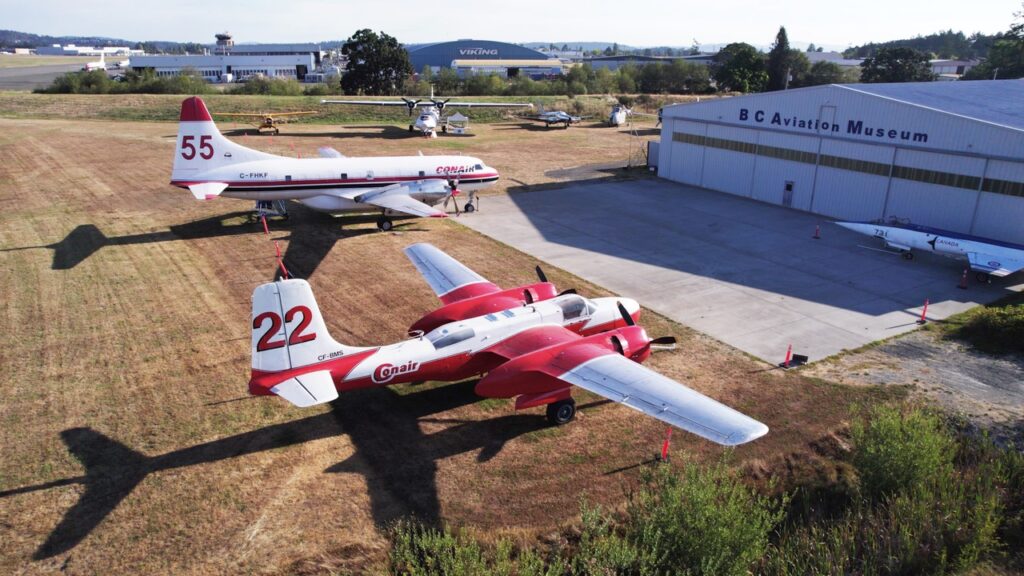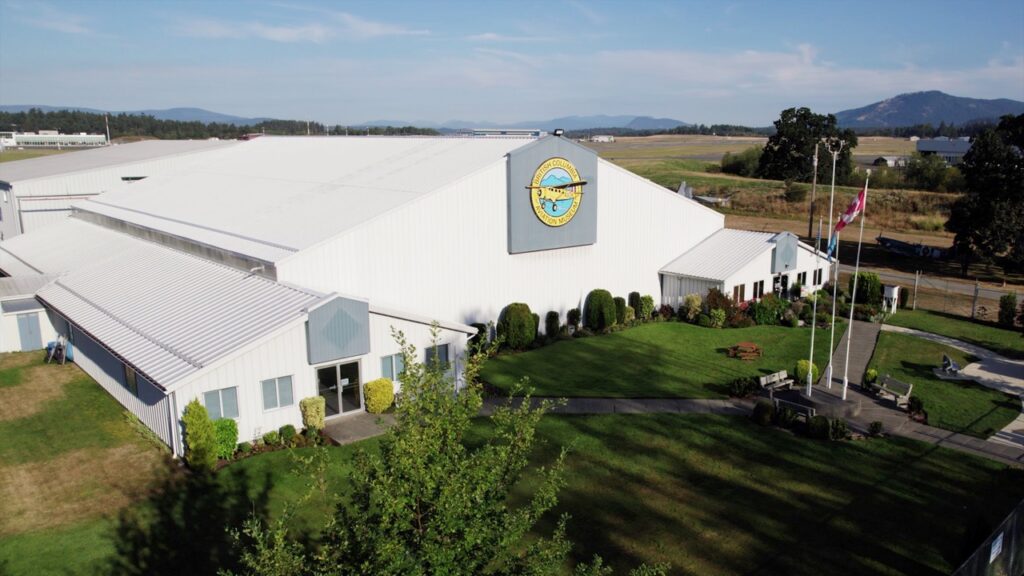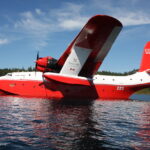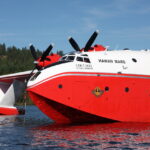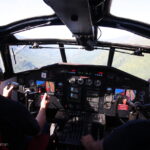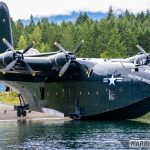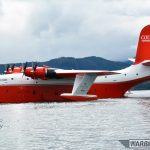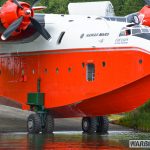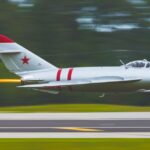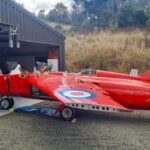Given the strong, more than half-century association between the Martin Mars and the people of British Columbia, it is only logical that a Mars should remain preserved in the Canadian province following Coulson Aviation’s final retirement of the breed in recent years. As we reported in March, the British Columbia Aviation Museum succeeded in their bid to obtain Hawaii Mars (BuNo.76823/C-FLYL), one of just two surviving examples of the behemoth flying boat. Hawaii Mars will soon join this significant Canadian institution located within the boundary fence at Victoria International Airport on Vancouver Island. The ferry flight to the museum, tentatively scheduled for August 10th this year, will likely mark the type’s final ever journey skyward under its own power. With this in mind, we reached out to the museum to learn more about their plans for Hawaii Mars. Our publisher, Moreno Aguiari, sat down with Richard Mosdell, the project lead for the museum’s Save the Mars team; the following article resulted from their conversation, gently edited for clarity.
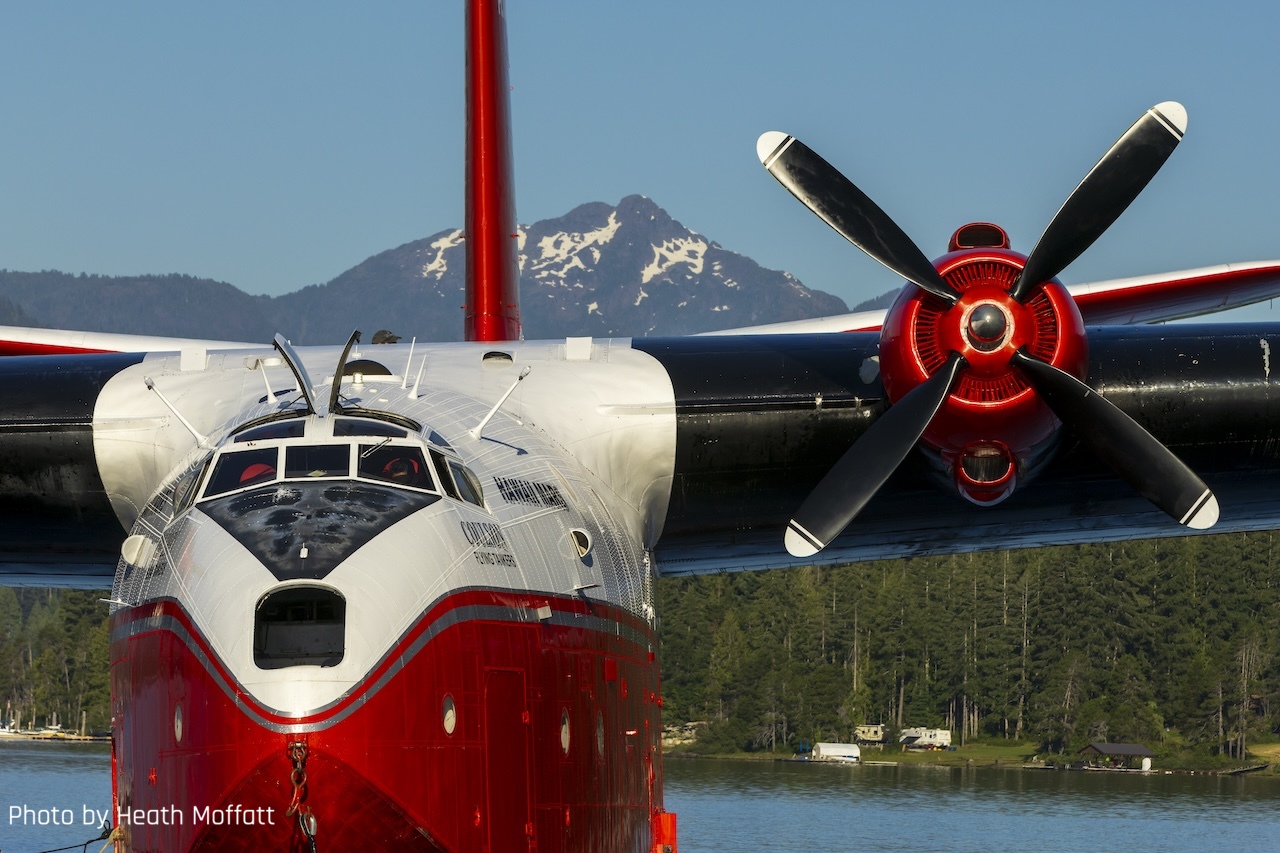
The Deal: How Did it Happen?
Acquiring the Mars was a massive coup for the BC Aviation Museum, so we asked Richard Modsell to explain how the deal came to pass. After the fact, it is actually an amusing example of the miscommunication which can sometimes occur in the largely volunteer-run aviation museum community. It is also a testament to how one person’s perseverance can sometimes provide an avenue to unexpected success.
Richard Modsell explained, “When the Hawaii Mars was put out for sale by the owner, Coulson Aviation, in January of 2022, it was big news around the world… and I just thought to myself: ‘This isn’t right; it shouldn’t go for sale overseas. This needs to stay in Canada… It should go to the B.C. Aviation Museum here in Victoria, because it’s a wonderful museum, and they have the space, and … a sea ramp to the ocean.'”
Mosdell has been a lifelong member of the museum since it opened in 1988, and the idea of the Mars slipping away south ate at him. His family kept telling him to steer clear of the issue, but after a few days he found inaction impossible.
“I called the museum,” he recalled, “and I got the manager on the phone and asked, ‘What are you guys doing about the Hawaii Mars being sold overseas? It really should go to your museum.’ And they said, ‘We’ve been trying to get a hold of Coulson Aviation’s owner, Wayne Coulson, for 10 years, and he never calls us back.'”
Mosdell wasn’t convinced by this response, however, so he decided to take the initiative.
“I hung up the phone, and within three calls, I got through to Wayne Coulson and asked him, ‘Hey, just out of curiosity, why aren’t you donating the aircraft? Or is there a way that the aircraft can be donated to B.C. Aviation Museum?’ And he said, ‘I’ve been calling those guys for 10 years. They’ve never called me back.'”
“It’s the famous story, right? And so, Wayne and I connected over a love of the plane, and he told me, ‘Great, be in my office Friday, 10:30 AM. Let’s talk about the possibility of donating the aircraft to the museum.'”
“I hung up the phone – and there I was: I had a meeting with the owner, but I had no role – no connection whatsoever – to the museum, as either a volunteer or a staff member. So, I called the museum back, and explained to them that I had got this meeting. They said, ‘Holy moly! That’s incredible! Come up here right away (and let’s find out if you’re crazy or not!)”
“So, I went up to the museum to meet the two volunteer managers, Bob Saunders and Mac Duffield, who were running the place. At that time, we had no actual paid staff; it was all volunteers. It is fantastic that the facility is such a great place where so many people put so much of their heart and soul into running it.”
“They came with me to meet with Wayne [and] we had a really great conversation about the possibility of getting the aircraft. It’s a three-hour car ride there and back, and on the way there [the three of us] bonded. On the way back I explained to them all my ideas, and I heard about their ideas.”
“And then we got back to Victoria, and they said, ‘That’s it. You’re crazy enough to be the project leader. You’re the project leader!”
“And since then, it’s been a process of figuring out how to put all the pieces together!”
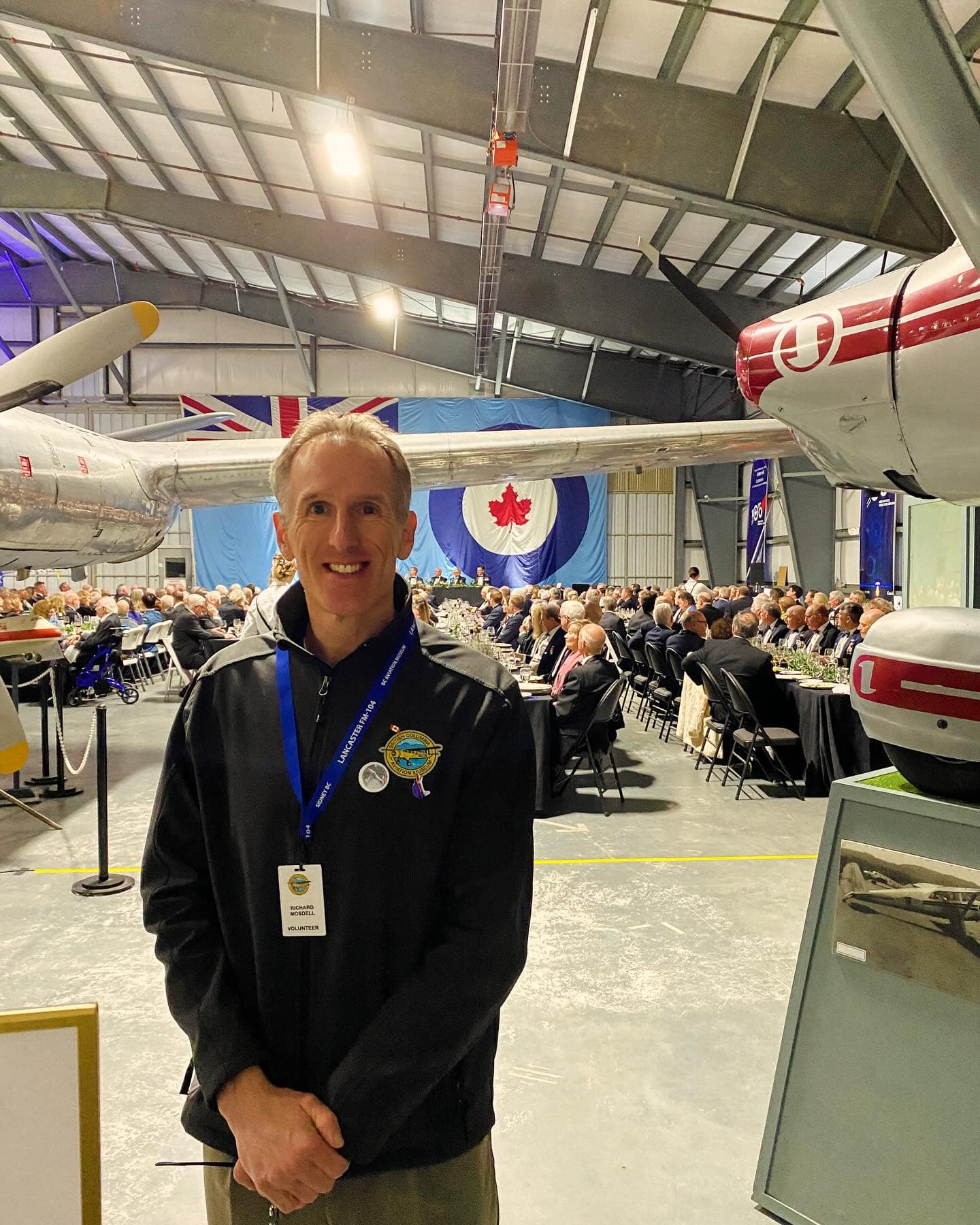
Putting the Pieces Together:
“With the Mars, I looked back at why it hadn’t gone to another museum yet. There have been about five failed attempts to get either of the two planes to different museums… I studied those five attempts with the team, and the failures always came down to one of the major pieces of the puzzle being missing.
They’d have a location, but they wouldn’t have the plan to get it there. Or they’d have some sort of government-written support, but not the financial support. The other thing is [when we started the project] we didn’t have paid staff in the museum, because we needed operation managers and an executive director, front office staff, who could run the museum so that the volunteers could be freed up to work on this project. That has all changed now.”
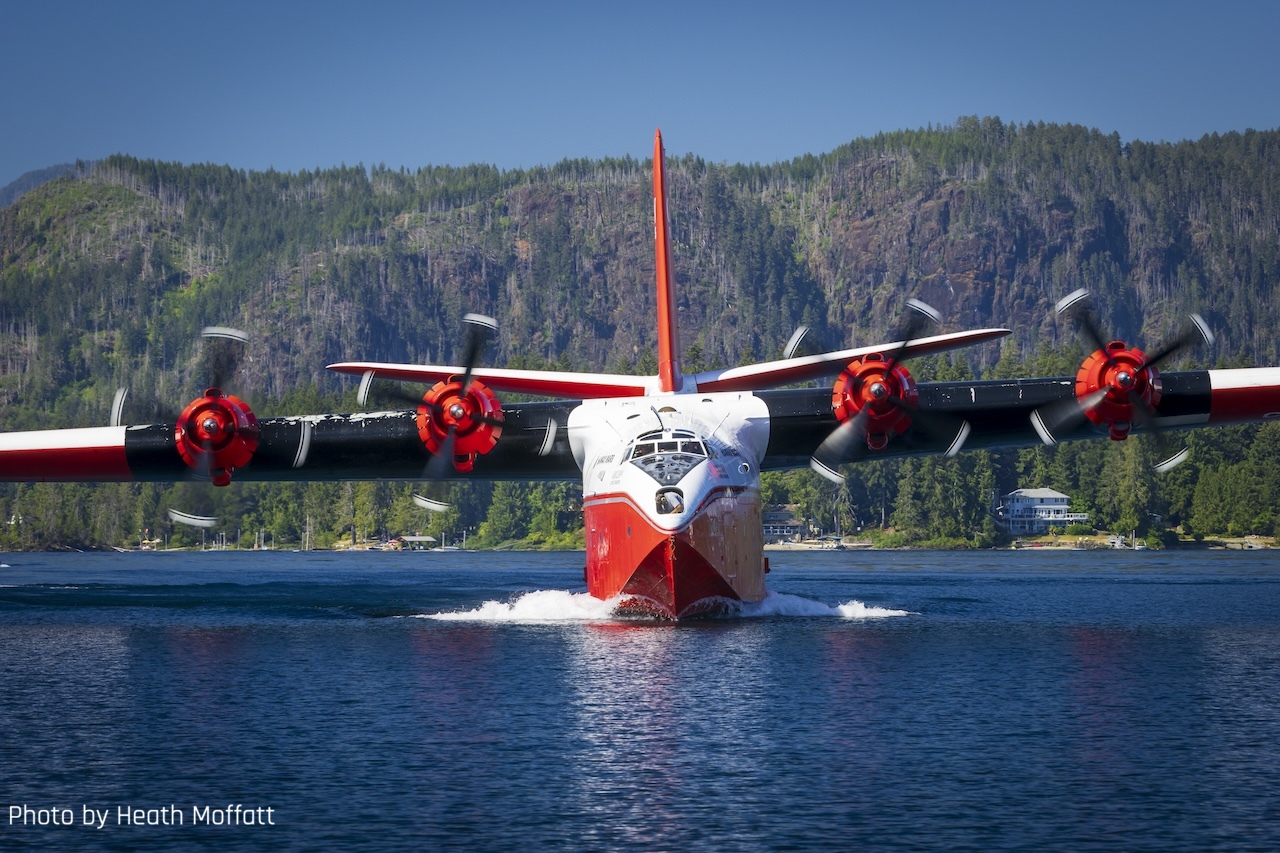
Initial Plans:
“The ultimate goal is to move the aircraft safely to the museum. As noted earlier, it will become a static display for the first month or two, so people can walk around the outside, while we renovate the inside. After that, it’ll become an open display… For the first time ever, the public will be able to go inside the plane right up to the cockpit, walk on the two decks, and actually experience it up close while hearing all the amazing stories [of its operational career].”
Access: “What’s fascinating is that, for almost 60 years, the public has never had access to it… And our goal is to make sure that it’s accessible for everybody.”
Stories: “There are probably 20 or 30,000 people who worked directly in the Mars program over the many decades. The Mars saved millions of dollars of property. It saved lives. There are so many stories that are coming out about what it did, and we want to share them.”
“There’s a famous line which everyone here remembers: ‘When you hear the Mars, you feel safe.’ How many aircraft do you think about like that – unless you’re in a military battle? We have stories coming out of the woodwork like crazy, so our archive and library guys are going to be super busy from now on documenting it all for sharing with the public.”
Teamwork: “In BC, wildfire fighting is never just about the airplane, and it’s never just about the ground crew. It is a huge team effort. We want to make the Mars our crown jewel as a B.C. wildfire aviation exhibit. We will explain how it works – what a water bomber does. It knocks the temperature in the fire down, and then the ground crews can go in and take care of it.”
“Of course we have the STEM side (science, technology, engineering, math) planned for the exhibit to inspire kids and teach them through our education programs about aviation.”
Covering the Costs:
“The cost of bringing the Mars crews back, opening up the plane, preparing it for flight, flying it here, that sort of thing… is probably between CAN$750,000 and CAN$1,200,000. …The donor, Coulson, is covering about half the cost, which is amazing, and the museum is covering the other half of the cost – which the B.C. government kickstarted by chipping in CAN$250,000… The museum has been saving money and raising money for the other amount which we are paying, so, it is a real team effort.”
“Between the B.C. government, the museum, and private donors we are doing well. And the museum is running better now too. Just the fact that we now have paid staff, a more streamlined operation, more people coming, we are able to make money and put it against our projects, and then the donor donating quite a bit to make this happen. That’s how it’s going to get here.”
For those interested in supporting this project, the museum has an ongoing fundraising campaign. Donations can be placed HERE.The Big Move:
“About eight guys have come back to Coulson – retired pilots, engineers, ground crew – and they have spent a month and a half opening up the aircraft. They just turned over a couple of the engines in the last few days. They’re going to get it out on the lake and do some water taxiing. Transport Canada will do all of the approvals… And then, there might be a practice flight. I’m still waiting to hear about that.”
“But it’ll be a ferry flight that will just have the pilots and engineers on board. As long as the weather is going great, it will take off from Sproat Lake on Vancouver Island, where it’s been based its entire working life, fly about 20 minutes over the Vancouver Island, and hopefully down the east coast of the island where most people live, and then land on the ocean beside Victoria Airport. We will then tie it up to a buoy. After that, the team at Sproat Lake will drive the beaching gear equipment to Victoria, and the next day they’ll attach the gear and bring the airplane out of the water.”
“The reason they don’t bring the beaching gear down ahead of time is that if it has an engine problem in the air or something along those lines, and they have to land back at the lake, they will want all the gear and the crew everyone still at the lake, ready to receive it again if they have to get out of the water and work on it.”
The Big Wash:
The Mars will stay one night out on the ocean, and then Coulson Aviation will have it pulled out of the water via the old seaplane ramp. The saltwater then gets washed off. It will take about ten people, and ten hours to wash the aircraft. A team will then place the Mars in a special, 360º-movable cradle. This will enable the crew maneuver the massive aircraft around the various new buildings which have sprouted up on the ramp since the end of the flying boat era. This phase, as the moving guys call it, will be like doing airplane yoga!
Interestingly, the ramp it has to ride up, and the apron it will eventually sit on to get into the cradle, are the original locations where Hawaii Mars and her three siblings, were converted into water bombers during the late 1950s. So, it’s literally coming back to its original water bomber home… Imagine living in Victoria during the late ’50s and seeing four Martin Mars flying out in the ocean doing practice water bombing routines. Seeing just one is incredible, but having four of them circling around the city back then must have been incredible!
Museum Arrival:
It will take about five days to transfer the Mars into the cradle. Once that is completed, then all of the airport fences will come down briefly so the aircraft can be moved across the runway to its final destination. Obviously, this will take place in the middle of the night when the runways are closed. By the morning, the Mars will be set up beside the museum. It’ll become a static display for the first month or two, so museum volunteers can prepare the airframe interior for visitors. It will then become an open display once the museum has figured out the proper way to flow visitors through it.
Final Flight and Future Plans:
Presently, if all goes well and the weather cooperates, the aircraft will fly from Sproat Lake to Victoria on Saturday, August 10th. Mosdell expects to release information about the best locations for people to view the flight. The B.C. Aviation Museum will hold its annual Open House on the following weekend, by which point they hope to have the Mars sitting beside the main buildings. By the last weekend of September, they hope to have Hawaii Mars ready for people to tour its interior. At that point, they will start their fundraising campaign to build a large glazed hangar to house the aircraft on new land which the airport has provided the museum. The new building will also house other aircraft in this extraordinary museum, including Avro Lancaster Mk.X FM104, which is well on its way to completion in a ten-year restoration effort.
We wish to thank Richard Mosdell very much for talking with us about the B.C. Aviation Museum’s big plans for the Martin Mars. We expect to have more information soon, especially about the ways in which our readers can help the museum pull off this amazing endeavor and secure a long term future for this magnificent aircraft! For those interested in supporting this project, the museum has an ongoing fundraising campaign. Donations can be placed HERE.
